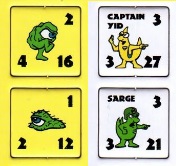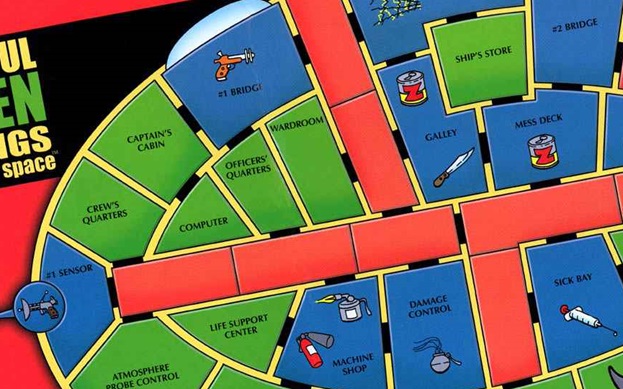Unplugging members of the Millennial Generation and introducing them to real world hex and counter wargames is good for them, good for you, and (let’s not engage in any false humility here) good for western civilization and all of humankind. This week let’s take that idea beyond the easy question of “why” and delve into the much more complicated issue of “how”.
But before that, we still need to establish “what” we are doing. As with wargames, you have to understand the victory conditions before you can develop a strategy or tactics to achieve success. In the case of wargaming, you will know you’ve won when you see a child occasionally skip the video screens and instead grab a box of maps and counters, without your prodding. You can get them to do that, but you’ve got to put on your salesman hat and think like a salesman.
As a parent or teacher or weird uncle, you could demand that the kids sit down and play a wargame with you for a couple of hours or there’s no desert for them, by gum. You can use your position of authority to make them lay out a beige map, sort counters, fiddle them into place, and fidget while you mumble your way through the rules. You could pause now and again to explain that this is for their own good, and that it builds character, and you sure wish your dad had taken the time to share his hobbies when you were their age.
Please don’t.
In an ideal situation, you won’t even have to ask your kids if they want to play, they’ll ask you. You’re a wargamer, you should be wargaming, and you should be wargaming in front of them. Let them see you poring over a crowded map, and let them hear you laugh with your friends over a roll of the dice. Show them by your actions that these games are great fun, and they will want to join in. Especially if you give them the ‘old soft sell: “I don’t know, these games are pretty grown up. I don’t think you’re ready for them just yet.” Nothing makes a child want to do something more than the combined temptation of forbidden fruit combined with the potential to engage in grown-up play time.
If they don’t ask first, or if you never play wargames around them, then you will have to boil the frog a little slower. Don’t ask them if they want to play a wargame. Instead, just ask if they want to play a game. With board game sales topping $75 million dollars in 2013, it’s a safe bet that you’ve already introduced your kids to the basics of board games through classics such as Candyland, Chutes and Ladders, or Connect Four. Any time they express interest in a boardgame, that’s a great time to introduce them to your gateway drug of choice.
The exact starter wargame will depend on the child of course – you’re a salesman now, and a good salesman tailors his product to the tastes of his customer. Older children with a pre-existing interest in history are well primed for a basic primer like One Page Bulge. One Page Bulge is a simple wargame complete with attack ratios, victory points, and weather effects. The map is large enough to provide for multiple strategies, but confined enough not to overwhelm, and the turn limit and play time provide some insurance against a limited attention span.
One Page Bulge probably won’t convince the younger set, or those with no exposure to wargames at all. The color pallet, lack of graphics, and ruleset an order of magnitude more complex than the games you find in a big box store, might be too big a step up for most children. You can add to the appeal of wargaming by starting off with something more fantastic, but still a close cousin to traditional wargames. Steve Jackson’s Ogre, which pits a frantic human defense against a relentless supertank killing machine, or the spin-off, GEV, which is a more traditional tank fight set in a far flung future. Both games use the standard hex and chit materials with the stacking, attack ratios, and terrain effects that are wargame bread and butter.
For younger kids there is no better introduction to bard and chit wargaming than Tom Wham’s “Awful Green Things From Outer Space”. This title gives you a bright and cheery theme – cartoonish aliens attacking a similarly cartoonish spacecraft – but includes all of the classic tropes of a more traditional wargame. Just take a look at the counters:

The numbers in the corners are movement, attack, and defense.
Now take a look at the game board:

The black lines are doorways.
That’s an asymmetric map that constrains movement while allowing for multiple attack and defensive strategies. Each side can have upwards of 25 counters running loose at any one time, all of which have their own abilities, but it never feels particularly crowded or overwhelming.
Awful Green Things From Outer Space also includes an elegant ‘fog of war’ effect in that the defenders can pick up weapons to use against the invaders, but won’t know the effects of each weapon until they are used. Some weapons are devastating against groups, and others can cause the Awful Green Things to grow or even split into more monsters.
Despite the subject matter, bright colors, and fairly simple IGO-UGO turn format, this isn’t a kid’s game. It is a full blown wargame dressed up as a kid’s game. And yet all of those things – the theme, the complexity, the suspense as the beleaguered defenders start taking more risks – they all serve to draw kids into wargaming in ways they won’t recognize until it is too late. If you teach a kid to play this game, and he doesn’t take to it…save yourself some trouble. He’s just not into wargames.
Take it from a guy who has purchased multiple copies of the game, all of which wound up being donated to Boys & Girls Clubs in various cities, because he didn’t have the heart to tell the anklebiters, “No,” when they begged him to leave it behind. That includes multiple 10-year old girls as well as my own daughters. Eventually, this game wears thin, as do all games. In most cases, at least a few kids asked for recommendations on other games like the Awful Green Things.

Achievement Unlocked!
So there you have it, four easy to learn, easy to find recommendations for bringing a few kids into this great hobby. Go forth as proselytize, and maybe together we can right this sinking ship of culture before it is too late.
It is only at this point that I realize all of the titles I’ve mentioned so far are from Steve Jackson Games. For all of you sitting there wondering how that idiot could have failed to mention your own favorite kid-friendly game? There’s a comment section right down there – several commenters stole my thunder in the comments on the last article. So don’t be shy.
Maybe not as kid friendly as Awful Green Things but have good memories of playing Avalon Hill’s Diplomacy as a kid.
Kind of an advanced risk game with less pieces reliance on luck of the dice and more negotiation.
Backstabbing level the same!
Diplomacy… the game that ends friendships. I’m not sure I’d want to introduce it to kids, especially as a gateway game.
Ogre (also by SJG) is a pretty good intro wargame. The pocket version is cheap and portable, and the big deluxe Kickstarter version has the “Ooh!” factor with giant tank figures.
Ogre is great and good heads up about the kickstarter version.
Teenagers should be able to handle a little Diplomacy, they’ll get all that drama playing Risk. Younger kids, you are probably right.